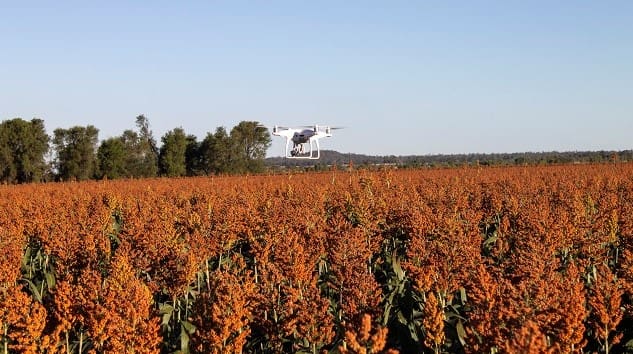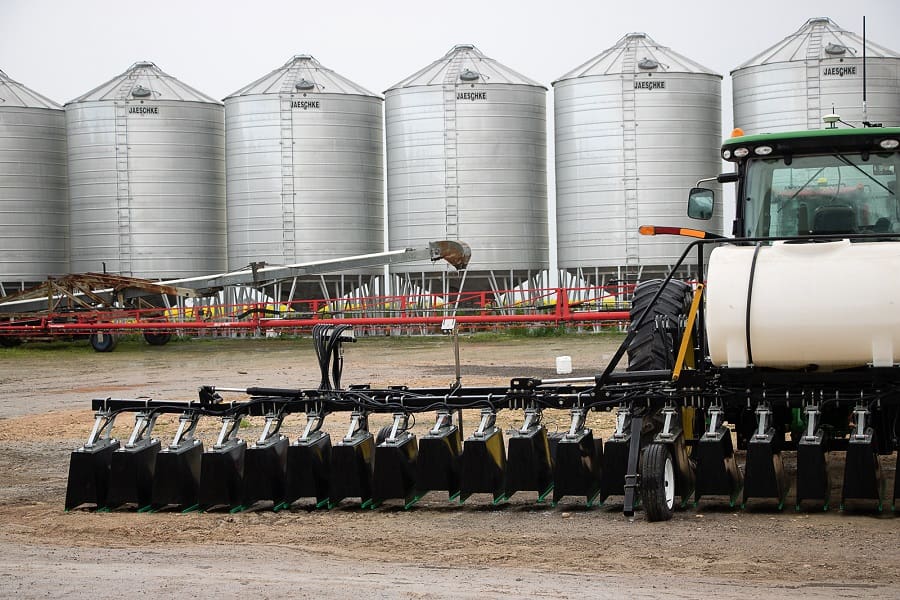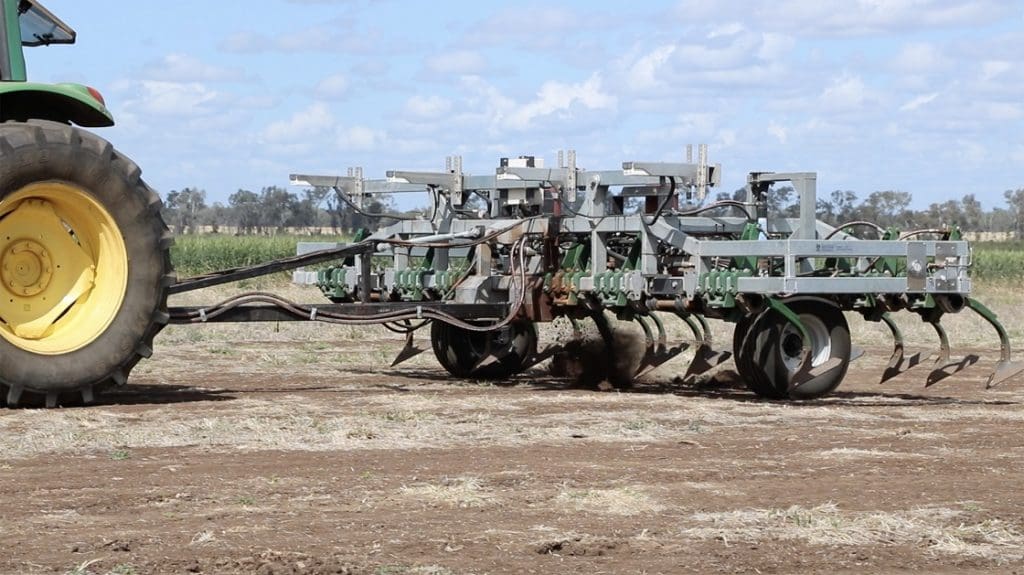
Using a drone to collect the imagery is a practical option that offers more flexibility but the images collected need to be stitched together to create a single image for analysis.
THE power of the WeedSmart Big 6 really ramps up when the tactics are applied in a site-specific way.
The broad-brush approach of herbicide application has played a big role in the development of herbicide resistance and has effectively changed the weed spectrum on many farms in favour of weeds that are hard-to-kill using least-cost herbicide options.
Australian Herbicide Resistance Initiative (AHRI) and WeedSmart agronomist, Greg Condon, based at Junee, New South Wales, has seen the benefits that growers have won through the use of optical sprayer technology over the last 20 years and is keen to see the development of new technologies that will be commercially available in the foreseeable future.
“Being able to identify weeds and apply a treatment that is going to be the most effective is the best way forward,” he said.
“If the treatment applied kills the weed and prevents seed set then eradication of the weed – herbicide resistant or not – is within reach.”
Once the location of the weeds is known it is possible to use robust herbicide rates and devise mixtures that are most effective on the weeds present, knowing that the volume of product applied will be low and therefore an economical proposition.
“The mapping technologies are developing fast and many are already commercially available,” Mr Condon said.
“In some cases, satellite imagery is useful to identify weedy areas and to estimate areas and in other cases, drone imagery is more useful. The NDVI sensors mounted on tractors can also provide good information about the presence and density of weeds.”
The site-specific weed control technology arena is pretty crowded at the moment with many companies and research bodies working hard to find the ultimate commercial products, but it won’t be long before there are paddock-ready options available to growers for both herbicide and non-herbicide control tools.
Many of the leading ag-tech companies gave updates of their products and services at the 2019 WeedSmart Week events at Horsham in Victoria and Emerald in Central Queensland.
What’s the best way to identify and map weeds or weedy patches?
Short answer: Satellite or drone imagery.
Longer answer: Satellite imagery gives a broad view of the weeds present in a paddock, particularly in a fallow situation. Recent personal experience showed that ground truthing satellite maps using NDVI filters was not very successful.
Using a drone to collect the imagery is a practical option that offers more flexibility but the images collected need to be stitched together to create a single image for analysis.
Some growers are effectively using their own systems but there is also a commercial option through providers such as Jerome Leray at In-Farm.
Getting accurate maps that can turn your current sprayer into a spot-sprayer is the closest-to-reality technology in site-specific weed control.
When combined with the rapidly moving development of software to identify individual weed species, growers expect to achieve significant reductions in product volumes and take advantage of more expensive but effective selective herbicides.
What are the herbicide delivery platforms closest to commercial operation?
Short answer: Robots and automated tractors are now giving a new angle to older technologies and artificial intelligence software is rapidly developing to support integrated herbicide sprayers.
Longer answer: Using an automated tractor or a robot, such as a SwarmBot, to expand the use of optical sprayer technologies opens up the possibility of spraying more often and continually targeting small weeds. These platforms could also adapt to new technologies as they are developed.
The reliability and practicality of green-on-green spraying is still a little way off but there is significant investment going on with ag-tech companies such as Bilberry and AgriFac teaming up to build a sprayer with wide-ranging capabilities.
While the green-on-green technology is a not yet widely or economically available, an interim option is a camera-guided shielded-sprayer.
Being camera-guided, sprayers like CropStalker can operate in crops like lentils that do not have the plant architecture to allow the use of conventional trailing shields.
These sprayers currently apply a band of herbicide so they are not weed-detecting, but they are still able to target weeds growing in-crop and using lower volumes or more selective herbicides.
There is a possibility that these sprayers could also have cameras fitted to spray only when weeds are present.

CropStalker
And the ‘old’ optical spot sprayers are also updating, WeedSeeker 2 now has on-board weed mapping capability while WEEDit have upgraded their sensor accuracy and capability to analyse data.
On-board mapping capability allows the sprayer to ‘remember’ where weeds were sprayed early in the fallow, enabling the operator to apply residuals to known weedy patches while also applying a knock-down to kill existing plants prior to planting.
What about delivering non-herbicide options?
Short answer: Although there are a few non-herbicide tools being developed, most are likely to take a while to come to market.
Longer answer: The problem with many non-herbicide options, such as microwave and laser, has been that they are high energy when applied in a broad band, but the energy required is cut by over 90 per cent when applied in a site-specific way.
SwarmFarm have demonstrated the possibilities of microwave units on a robotic platform that also allows for the time required to deliver the necessary treatment.
The WeedChipper is another option that uses sensors to detect weeds and activate a tyne to physically remove weeds.
Once developed, this tool has great application in situations where escapes have developed into large plants where herbicide is not the best option, or to manage weeds that are difficult to kill using current herbicides.
An overseas camera-guided cultivator, like the camera guided shielded sprayer, is also available and suitable for reducing weed pressure in-crop.

WeedChipper
Source: WeedSmart
…………………….
How to ask a WeedSmart question
Ask your questions about site-specific weed control on the WeedSmart Innovations Facebook page WeedSmartAU, Twitter @WeedSmartAU or the WeedSmart website www.weedsmart.org.au/category/ask-an-expert/


HAVE YOUR SAY